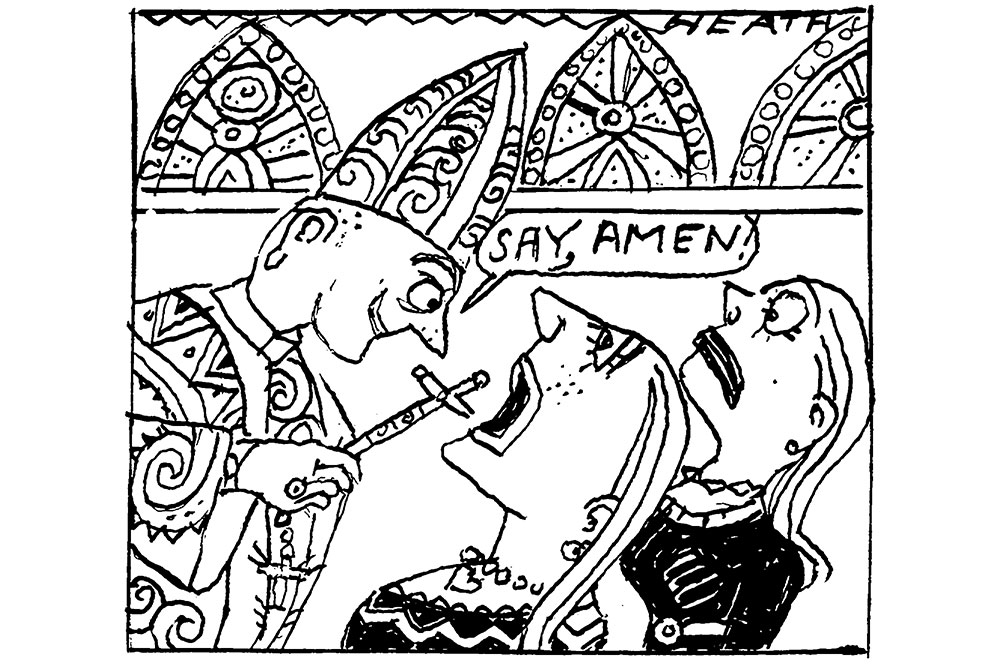This Saturday, go to London’s oldest Catholic church, St Etheldreda’s in Ely Place, Holborn, and you will find a gathering of singers, along with actors, announcers and other public speakers, who have come to have their throats blessed. Two crossed candles are held up by the priest and either these or a piece of wick soaked in holy oil are touched to each kneeling suppliant, as a special prayer is said.
‘Oh God deliver us, by the intercession of thy holy Bishop and martyr, Blaise, from all evils of soul and body, especially from all ills of the throat.’
As with most saints in the early history of the church, the explanation of how Blaise came to be the patron of throats (and, since saints are generally multi-tasking, of wild animals and wool combers) is the stuff of legend.
Of noble birth and a doctor, as well as a most pious man, Blaise became bishop of Sebastia, in Armenia, then predominantly Christian – which did not please the Roman general Agricola, who had Blaise arrested. On the way to prison, the party encountered a woman with a small son who was choking on a fish bone. When Blaise raised his hand, the bone flew from the child’s throat.
Accounts of miraculous deeds travel far and by the 6th century, he was venerated as a saint, after having cured not only many a sore throat but numerous sick lions and tigers – possibly also with sore throats. Credulity becomes stretched only when we read, in the Acts of St Blaise, the story of the old woman whose pig had been eaten by a wolf. Blaise commanded the wolf to return the pig, which it did immediately, delivering the animal alive, whole and unharmed, to the amazement of all.
He is often depicted holding the crossed candles, in reference to the touching story of the woman who brought him two to lighten the darkness of his prison cell.
Blaise’s saintly patronage of wool combers has a less charming explanation. Inevitably, Agricola had him killed when he would not renounce his Christian faith, but before he was beheaded, his bare body was scraped with steel combs. After hearing the story, anyone seeing a sheep comb, still in use on farms, may well remember poor Blaise, who could not save himself for all he rescued so many others from throat diseases, choking or being swallowed by wolves.
Yet behind every over-embroidered saintly legend surely lies a grain of truth. Children have long been brought up on stories of saints as rich and fantastic as any of Arab princes and fairy princesses, all of them intended to teach a lesson about a living faith rooted in the remote past.
Civic centres are not much known for their holy connections but workers in the Bromley one must be healthy with perfect throats because the centre is on the site of the old Bishop’s Palace, and incorporates a holy well dedicated to St Blaise, which, of course, has many healing properties.
St Blaise is named as one of the Fourteen Holy Helpers, saints to be invoked against plague. A sore throat being the first sign of Covid as well as of just a cold, perhaps even we non-singers could do worse than get ours blessed on 3 February.







Comments